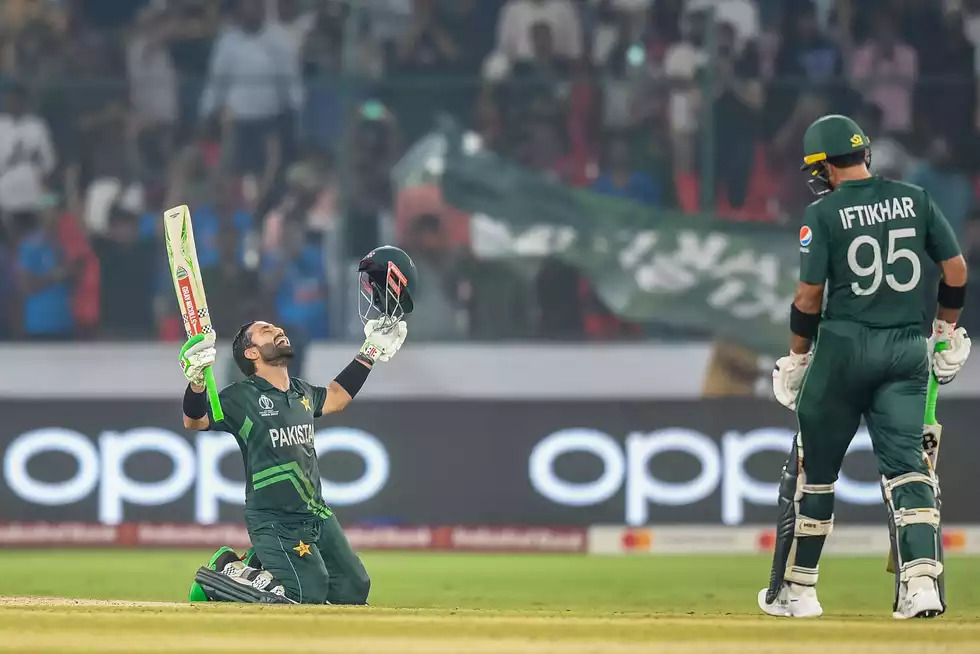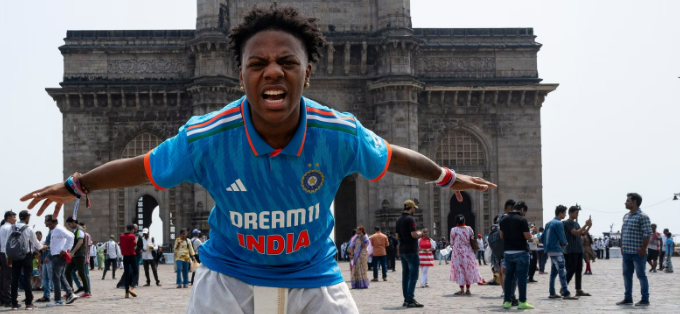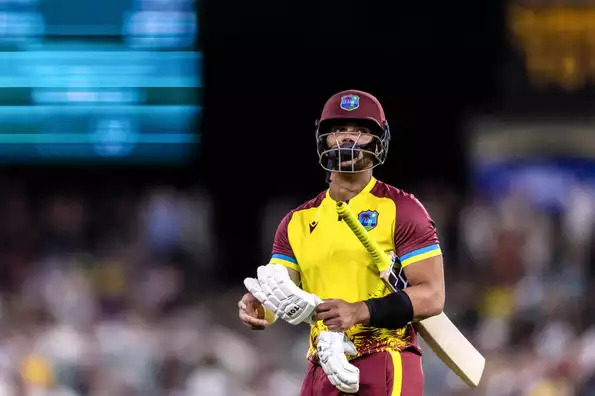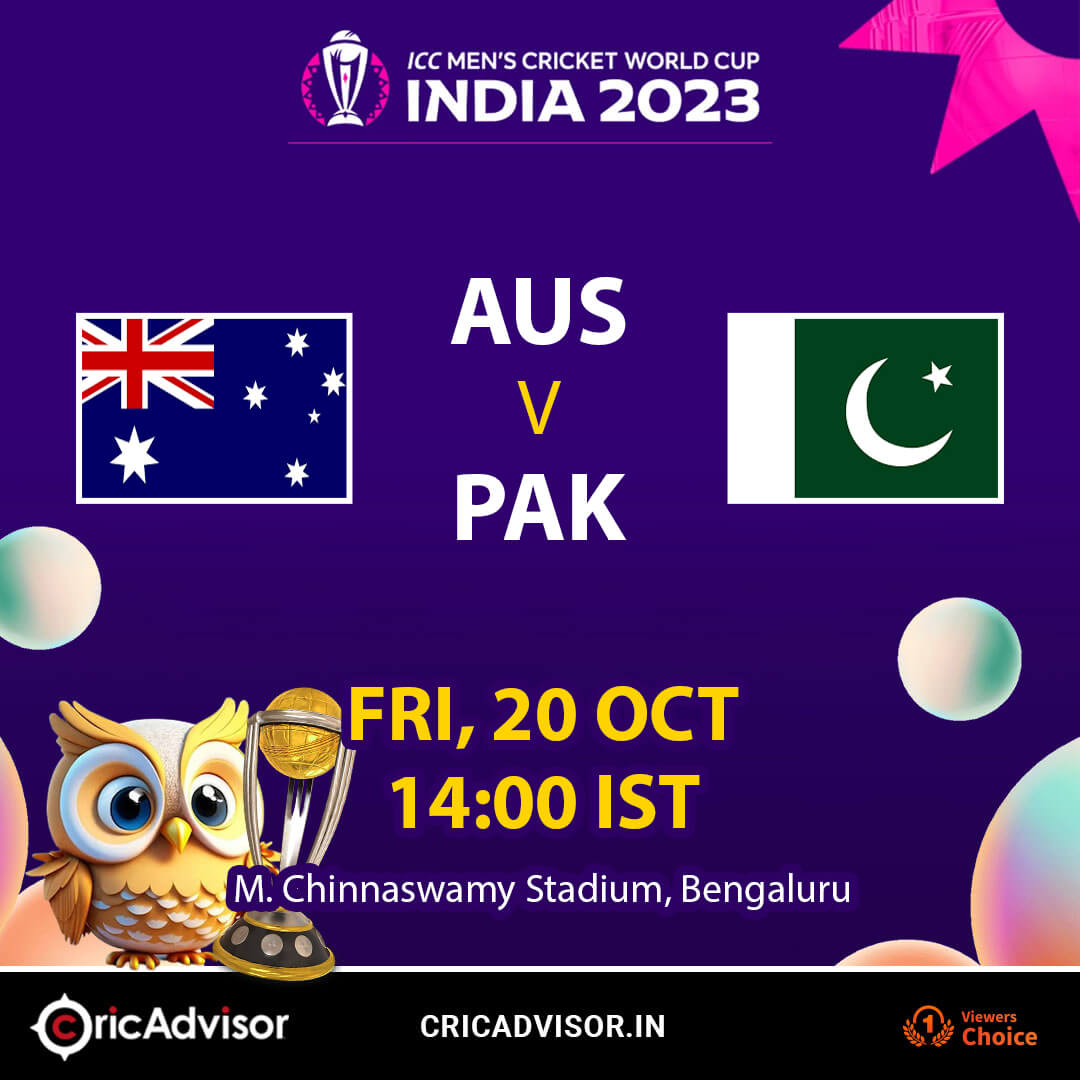
“The bounce is uneven here.”
Imam-ul-Haq informed one of the instructors as he moved from net No. 2 to net No. 3 during the second practice session for Pakistan in Hyderabad. Both Imam and Fakhar Zaman had labored against the pacers on that pitch, and it was Mohammad Rizwan’s turn to occupy that net. The wicketkeeper-batsman, who had rehearsed for twenty or so minutes to keep his compulsive draw shots to the ground, was injured shortly after moving to Net 2’s problematic turf. After momentarily allowing the pain to subside, he resumed his training after being struck on the hand by an abruptly rising length delivery. He did not flinch or offer an explanation.
Rizwan’s attitude toward physical suffering is one of explicit, old-fashioned bravado. Rizwan attempted to brighten the atmosphere last year during the T20 World Cup, when Shan Masood was struck on the head while ducking Mohammad Nawaz’s straight smash in the Australian nets (leaving everyone mildly dazed). “Jang ladne jaa rahe ho, ek-do qurbaaniya to deni padegi (we’re going to a war, we will have to make a few sacrifices)” he humorously stated.
On Tuesday, when he was in the middle, visibly troubled by the cramps for more than half an hour, he chose to carry on. ‘Cramp Fix’ was all he needed – he claims to have helped him ease back – from the physio to stay put at the crease and see the side over the line in the record run chase against Sri Lanka. And when asked about how he dealt with the visible pain, he kept his humour intact, “It was sometimes cramps and sometimes acting.”
It wouldn’t be too far-fetched even if he was serious about playing to the gallery. Two weeks in the city, and he had the crowd egging him on. Cheering, hooting and whistling even the singles he took hobbling in immense pain. The 23,000-odd people, who had largely split their allegiance during the match, had turned unanimously vocal in support of Rizwan by then. The stadium atmosphere, in his words, made him feel as if he was playing in Rawalpindi.
In some ways, for the Hyderabad crowd that he said proved to be the ‘real supporters of cricket’ for the manner in which they backed both teams, he had showcased the best of Pakistan’s batting. After a century in the warm-up game, in the two World Cup matches, he walked in at times when the top order had faltered and consolidated the innings in the company of the most inexperienced batters – Saud Shakeel and Abdullah Shafique, guiding them through the course of match-winning partnerships, and in the process their respective landmarks.
“Irrespective of how the pitch is, when you’re chasing a 300-plus total, there is obvious pressure. I told Abdullah that till the 20th over, we don’t need to look at the scoreboard. Till the 20th over – since Babar Azam got out the way he unfortunately did – there was one plan (to take the team score to 100). And till the 40th over, there was another plan.
“When you’re chasing a big score and lose two wickets early, it becomes slightly complex. The key is to remain calm… We were under pressure when two wickets fell early. We were trying to take the game deep and put the pressure back on Sri Lanka. And that’s what happened eventually.”
The pair combined for a 176-run stand, but shortly after Shafique’s departure, Rizwan was also in physical distress. In the 36th over, he collapsed to the ground after an unsuccessful attempt to send a short delivery over the ‘keeper’s head. This was the first indication of his inability to stand. With abundant batting to come, cramping batters typically go for the huge strokes to maximize their time in the batter’s box. However, Rizwan resisted the temptation and continued running.
“I didn’t want to give it away, because Sri Lanka have decent bowlers. If I had given away my wicket at that moment, it would’ve been difficult for the new batsman. I had seen this at the start of my career when I would come into bat at No.7 or 8. I know it becomes difficult for lower-order batters. We were lucky the way Iftikhar and Saud Shakeel came and batted and played impactful innings.”
Rizwan’s international career may have been frustratingly delayed by circumstances beyond his control, but he has made rapid progress as a senior, responsible figure within the organization. This is a role in which he has historically flourished.
Even as a batsman, his ODI performance has markedly improved. Since January 2022, his average has increased to 60.47 from 28.80. It has enabled Pakistan to strengthen its middle order, which had long been a source of concern. Pakistan’s most recent 300-plus run chases were primarily dependent on the top order, which played a pivotal role. However, with Fakhar Zaman, Imam ul Haq, and Babar Azam collectively experiencing a dry spell, the burden has fallen on the middle order to sustain Pakistan’s batting in the early stages of this World Cup. It is also one of the most important areas of development for Pakistan in recent months, to which the coaches have enthusiastically attempted to draw attention.
While rejecting any specific work behind the scenes, Rizwan attributes the team management’s decision to support him at a higher position in the order for the metamorphosis of results in his ODI game.










